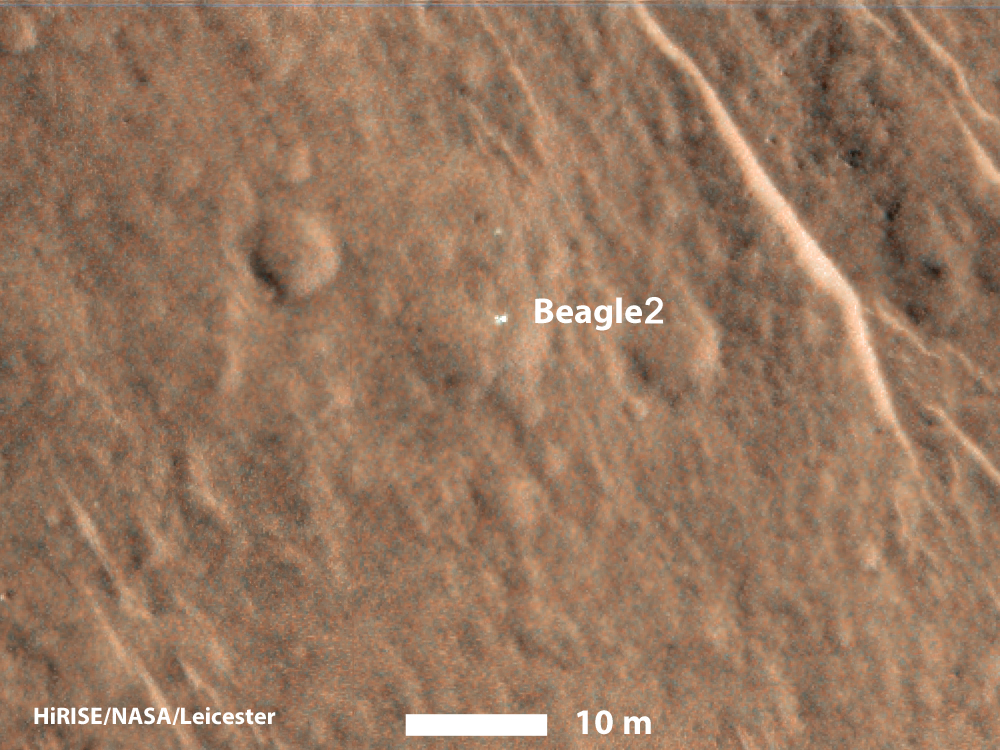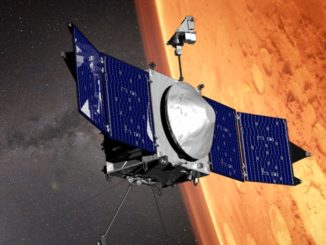
The British Beagle 2 lander likely failed when a solar panel failed to deploy properly, blocking its radio frequency antenna, new 3D modelling and comparison with images of Beagle 2 on the ground have revealed.
Christmas Day 2003: British scientists waited anxiously as Beagle 2, deployed by the European Space Agency’s Mars Express orbiter, plummeted through the Martian atmosphere to land on the red planet’s surface, deploy its solar panels and call home to inform of its safe arrival. However that call never came and, in the years since, all manner of explanations were put forward, such as variations in the density of Mars’ atmosphere that would have affected its descent rate and angle, or failure of its parachute to deploy. However, in November 2014 NASA’s Mars Reconnaissance Orbiter (MRO) spotted Beagle 2 at its planned landing site in Isidis Planitia, which is a four-billion-year-old impact basin near Mars’ equator. The images appeared to show that some but not all of the lander’s solar panels had unfurled, but the limited resolution of the images meant it was not clear how many of the panels had failed. One suggestion was that the panels may have become tangled up in lander’s parachute cord.

Now, scientists at De Montfort University in Leicester have applied 3D modelling techniques to try and ascertain what fate befell Beagle 2.
“In order to do this, our visualisation specialist Teodora Kuzmanova had to create a physically accurate 3D model of Beagle 2 with surfaces that would accurately reflect virtual sunlight,” says Nick Higgett, leader of the De Montfort University simulation team. Everything from the tilt of the lander on the ground, the position of the Mars Reconnaissance Orbiter overhead, the angle of the Sun and changing how many of the solar panels are open was simulated, pixelated to match the resolution of MRO’s HiRISE camera and then compared and contrasted to the real images using a technique known as ‘reflection analysis’.

The solar panels and multi-layer insulation on the lander are extremely shiny and reflect brightly, but differently depending on their tilt and the angle of the Sun. The four solar panels were all designed to unfold like a flower’s petals from the lander’s base. The reflection analysis technique, developed by the University of Leicester’s Mark Sims, who was Beagle 2’s mission manager, was able to analyse the 3D model and determine which configuration of panels best match the reflections seen by MRO.
The De Montfort Team, along with Sims’ team at the University of Leicester, found that the most likely scenario that matches the reflection seen in the MRO images is three of the panels being fully-deployed, and one solar panel that failed. A fully-open configuration also closely matches the reflections, but the lander’s tilt would have to be different for them to match exactly. If one panel failed to open, it could have been placed so as to block transmissions to and from the lander. Beagle 2 could have quite easily been operational on the surface of Mars, collecting data but unable to send it back to Earth.
“We’re one step closer to knowing what happened,” says Sims. “In reality we may never know exactly what caused its failure to communicate after what has been confirmed as a successful landing. Beagle 2 came so frustratingly close to working as intended on Mars.”



